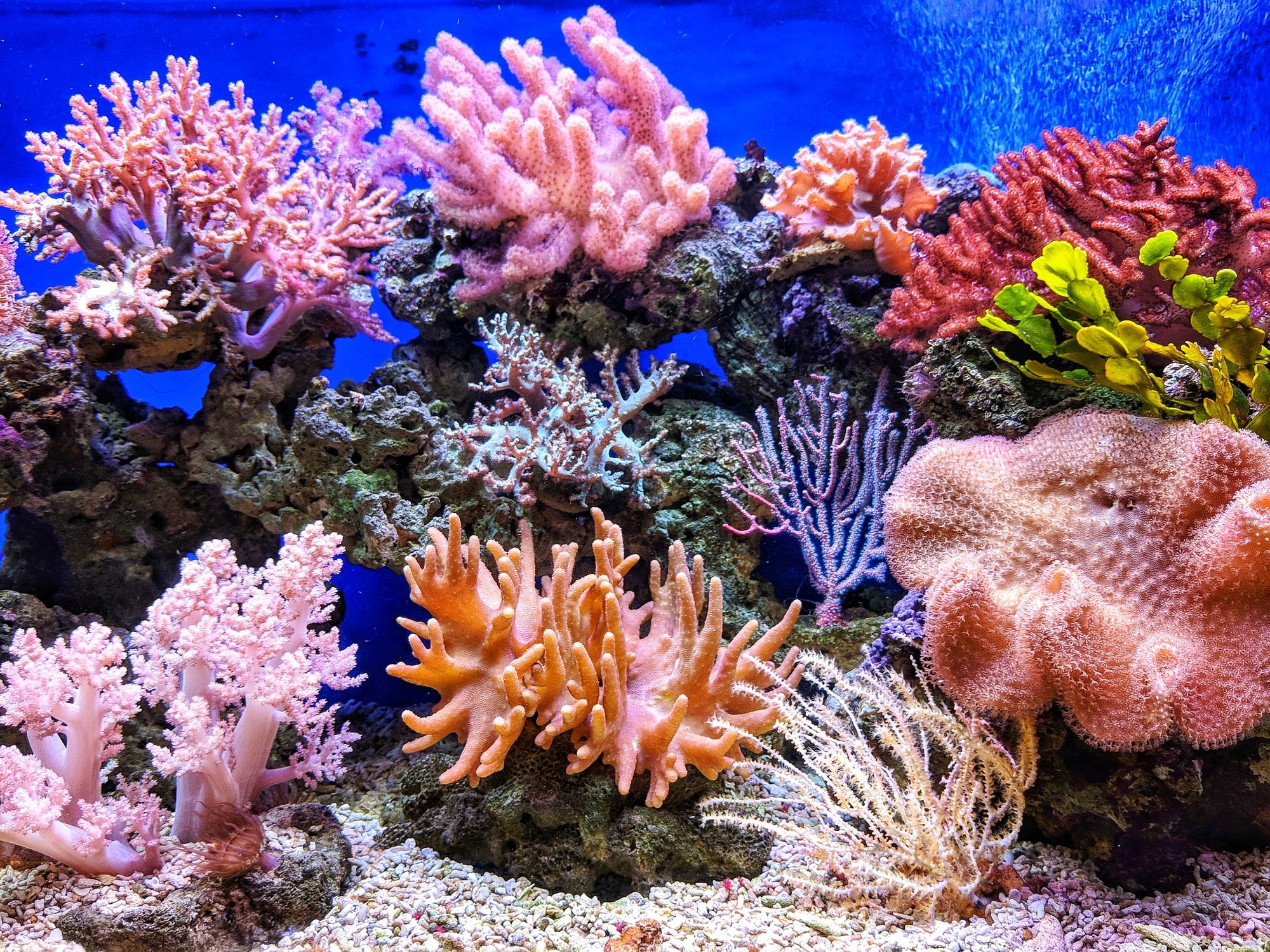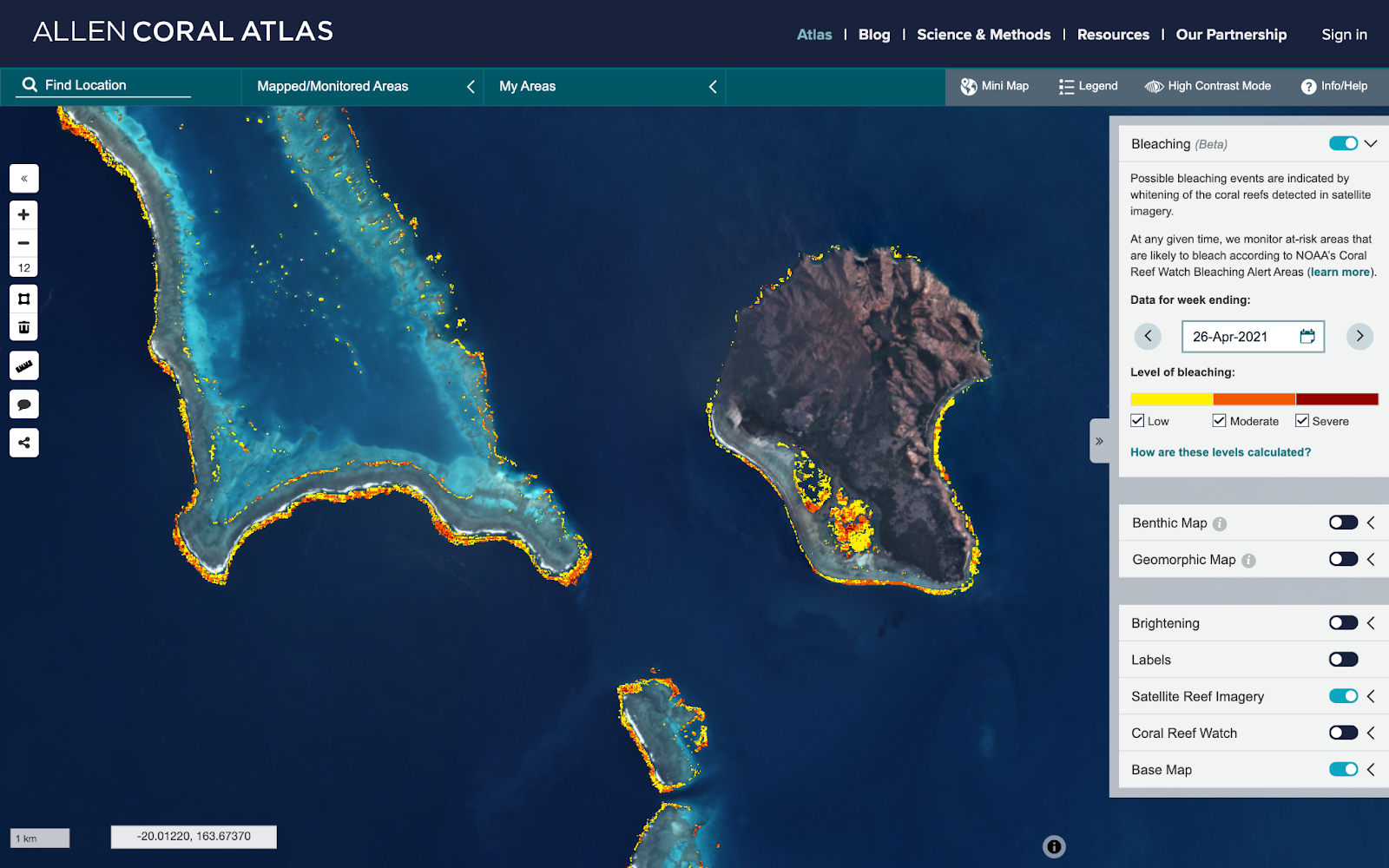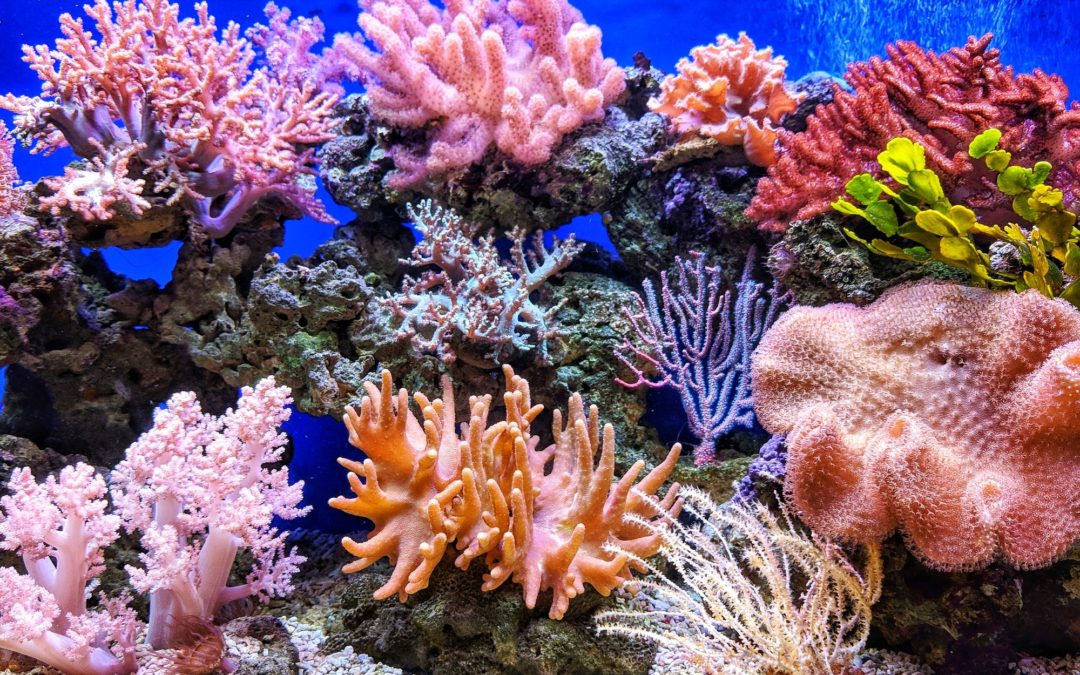
Scientists have designed a reef surveillance tool which is the world’s first. The tool is meant to track – and hopefully help prevent – coral bleaching, which is a major issue due to global warming.
In order to monitor the coral bleaching scientists working with the project known as the Allen Coral Atlas (a research initiative developed by Arizona State University (ASU), the University of Queensland, the National Geographic Society, Planet, and Vulcan) recently launched a satellite-based reef observation tool and it’s the first in the world. The new system can monitor bleaching events in almost real time and then present an overall view of tendencies and changes in coral reef health.

According to the scientists participating in the project, the monitoring system can notify conservation efforts by providing critical information about whether or not a reef is under stress and which reefs are more likely to be affected by events like marine heat waves. Greg Asner, managing director of the Allen Coral Atlas and director of ASU’s Center for Global Discovery and Conservation Science, said in a statement:
“Our ability to monitor changes in coral reef conditions has always been a clear but challenging requirement to drive decisions on where to apply our best restorative and protective strategies. The new Atlas Monitoring System is a major step in our effort to bring eyes to the reef at a global scale and yet with extraordinary detail needed for progressive reef interventions.”
Intend to expand the project
The project uses high resolution satellite imagery provided on a daily basis from the U.S imaging company Planet. The pictures are run through an algorithm that helps map healthy corals along with stressed out ones.
“This monitoring capability will help us to see, for the first time, where and to what extent coral bleaching is likely to be occurring as well as where it isn’t bleaching so we can identify resilient reefs. The system is the outcome of years of effort involving our ecologists, remote sensing scientists, software engineers and many others,” said Paulina Gerstner, program director for the Allen Coral Atlas, in the same statement.
During the Pacific heat wave during 2019 a beta version of the Allen Coral Atlas was tested in Hawaii. The “old” program could detect bleaching hotspots that were hard to identify with traditional field-based methods. It also helped researchers identify heat-resistant corals that could be used for restoration purposes.
In a blog post on the Allen Coral Atlas’ website, they write that this monitoring system will be an invaluable resource for coral reef education, research, and conservation. Atlas plans to continue producing innovative tools for the coral community.
“It’s important for people to understand that this is just the first global version of our monitoring system. We intend to improve and expand it to include a broader range of impacts on reefs such as land-sea pollutants and sediments. This first, truly global reef monitoring system is simply a drop in the bucket for what is to come,” Asner said.





